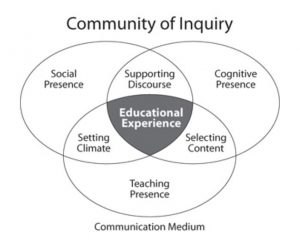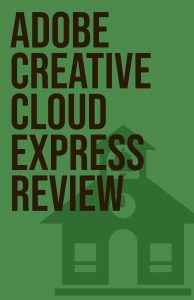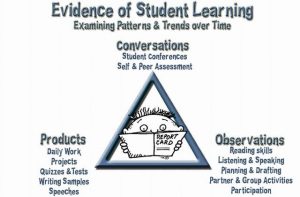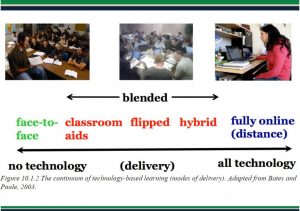We made it! Posted below is my summary of learning, glad to have taken this journey with all of you!
Category: Uncategorized
Final Overview
Welcome to my final course prototype! I am excited and proud to share all of my hard work with everyone. My course walkthrough will help to show my purpose and direction in creating my course. It is meant to be a blended course with flipped online lessons. The course comes of as more of a “checklist” of things for students to do with some utilization of community building. I hope to continue to grow in that aspect of my course designs.
Profile
To view my original course profile, follow this link to my BLOG.
Creation Process
My goal in the creation process of my course was to experience a new LMS and create practical content that I could use within the current ELA B30 course I am teaching. Through meaningful conversations with peers, collaboration, course content, and my own discoveries, I was able to grow my blended toolbox and create a strong course prototype to build off. I utilized existing content I had from class and reworked it to fit into the online flipped classroom design. I would have liked to get a bit further in terms of exploring other programs for content creation but just becoming familiar with Canvas as an LMS proved to be time consuming enough.
The feedback gained from my classmates was essential to the growth of my prototype. My reflection and takeaways can be read in this blog post.
Course Prototype & Walkthrough
If you would like to check out my course prototype, follow this link to CANVAS.
Below is a brief course walkthrough of my course prototype. It helps to outline the goal and framework of my blended course along with providing some guidance on how to navigate through the course. Enjoy!
The feedback process was extremely valuable to the development of my blended course. It allowed me to get ideas from my peer’s courses along with hear their suggestions and review of my own work. As teachers, we can often become isolated in our own classrooms, virtual or physical. This process allows us to explore others creativity to improve upon our own work. Without opportunities like this, we would just hear the echoes of our own work.

Feedback
In creation of my second module and revision of my existing course shell, there are several pieces of feedback that I plan to use:
-Instructions – Thus far, I have not found an elegant solution on Canvas to the posting of my module instructions. The module itself posts nicely and in order of activities to complete but there is not heading or section to simply have instructions written out. Currently, the instructions are in the announcements for the course. I would like to work on another alternative for this part of the course shell.
-Direct Instruction – Another suggestion made was to have a direct instruction component in my modules. I think this would be another way to create teacher-student interactions and give another way for the students to interact with the content. I am not sure how this will look yet, but it will be a part of module two.
-Checklist – A checklist of sections complete would be a nice addition, I am unsure if Canvas has this feature, but I plan to find out. This would allow students to see their progress and be sure that they have completed all the required components for the flipped lesson.
-Feedback – I have created assessments within my module but have not decided on feedback to this point. I hope to be involved in discussion posts with formative feedback, quizzes for instant student feedback and timely summative feedback with their larger assignments.

Accessibility & Equity
I feel that my course is accessible to all types of learners and should be able to accommodate for students with any language or disability considerations. However, the flipped classroom design of this class is very dependent on having access to technology and the internet. Without being able to access the resources, discussions, etc. from home, students will not be able to keep up with the natural flow of the class. This could be solved by allowing students some extra “flipped” time to catch up within the school day or providing them with resources to leave with at the end of the day. Having these courses utilizing blended learning allows for students to take ownership of the accommodations they may need. I hope that students will find my course content accessible, and they will be able to find any extra resources they need or reach out to me to make sure it is accessible to them.
Reasoning & Theory
In Chapter 4 of the Bates textbook, several design principles are laid out for successful discussion. Through my chosen forms of student/student-instructor interactions, although I may not be able implement all of them successfully, I plan to build around a couple of these design principles to start with:
Clear guidelines on student online behavior – I would like to take the opportunity in this class to build a set of class rules that can be used across any of the classes I teach. The online classroom, both synchronous and asynchronous, is largely an unexplored area for many students in Saskatchewan. I think that the experiences students have had thus far are negatively impacted by not knowing how to act within this space. Many communications are informal, riddled with spelling mistakes, and the minority of students understand the value of community building in this space.
-Regular, ongoing instructor “presence” – Regular involvement of the instructor in forum postings and small group video conferences is important to building community and having meaningful interactions. Without a focus on this area, it would be difficult to build a Community of Inquiry centered around the educational experience. I make sure to have a constant presence within my physical classroom and school, I would like to design my interactions to help me utilize this strength of mine that I already possess.

Choice, Justification, & Assessment
With these design principals in mind, I am going to use the “Discussions” feature of my chosen LMS, Canvas, along with Twitter and Zoom to expand the walls of our learning community past the LMS.
Discussions – This forum posting feature of Canvas seems to be an ungraded version of Moodle or Blackboard with several intriguing bells and whistles. This choice will allow me easily and effectively implement guidelines on student behavior and have an ongoing presence as the instructor. Students can access this method asynchronously and keep their guided conversations going throughout the week. This will be a way that I can allow students to engage in a meaningful way using content from class.
Twitter – I like the idea
of twitter for classroom interactions as it allows for students to explore beyond the course and its material. This will be helpful in creating more inquiry based learning and informal student interactions. This type of tool is a little out of my comfort zone as an instructor, which is why I believe I need to explore it within the creation of my course prototype.
Zoom – I like Zoom and video conferencing for the opportunities in can create for small group interactions between students. This is a platform where I can best implement regular, ongoing instructor presence with my students.
For forum posting within Canvas, I am going to try and utilize their quick, assessment tools for these postings. I struggle with giving timely feedback as it often takes me a long time to get through assignments, a quick, effective tool for assessment is something I desperately need in my courses. Outside of that, I will adopt guidelines for assessment that are based on participation, engagement, and community building from my students, rather than testing knowledge of course content.

Overview
I remember being informed in a staff meeting that our division had acquired a license for all staff and students to use this program. Fast-forward several years and here I am finally looking at its capabilities for a graduate studies blog post. I was even able to utilize the program to create my opening image for this blog post!
At first glance, this program may just seem like a social media tool and graphic editor but once you are able to spend a bit of time with the program, you are able to see its full potential. Adobe Creative Cloud Express has been revamped and is almost built entirely for students and educators. Some capabilities of the program include fool proof video editing, web page design, worksheet templates, infographics, branding, and so much more. The program saves all your projects online, giving you the ultimate flexibility and ability to pick up and continue from anywhere.
Review
After only a relatively short amount of time on this program, I was able to feel confident and comfortable with its interface. Users, no matter their technological sophistication, should be able to utilize its components to help enhance their classroom materials and create more blended learning opportunities. I really wish that I had started to use this program much earlier.
-Strengths
-Easy to learn and operate
-Saves your projects online; capability to work from anywhere
-Variety of features/capabilities with similar
-Variety and choice
-Easy to save and download your work
-Weaknesses
-Upload times and buffering of video can be slow
-Limited file types for saving (pdf, jpeg, png)
-Users could be overwhelmed with amount of choice/customization
-Sometimes need to rely on templates
Potential for teacher as a content creation tool
As a content creation tool for teachers, it has almost limitless potential to improve materials, visuals, slides, online video content, etc. Several of these possibilities include:
-Improved social media content for schools, teams, clubs, or classes.
-Ability to utilize the program for student work. Teachers can utilize this to collaborate and give students an interactive program to create assignments that can be accessed from home.
-Refresh worksheets, handouts, slides, etc.
-Video edit lectures.
Check out the program for yourself, is there any other potential applications you can think of for teachers or students!?
ELA B30 (Hamlet)
Mr. Scott Sully
McNaughton High School
Moosomin, SK
Rationale
Hey everyone! Here goes nothing! Happy Reading…
My goal is creating this course is to make something that is flexible and easy to access for students. Previously, in my experience with LMS programs so far, I have found a lack of student engagement and follow through on my end. With that in mind I believe that a blended hybrid model that utilizes a flipped classroom pedagogy will best serve my needs. I also plan to take advantage of several of my weaknesses within assessment and format as I develop this course.
I have chosen to design my blended course for ELA B30, with a focus on the study of Hamlet by William Shakespeare. I have chosen to do this as I am beginning this semester teaching this class and in a couple of months, I will be getting to this unit. This will give me time to better get to know my class and design the content to be more specific to their needs. It will also give me a chance to utilize more blended strategies and grow my skillset with a classic text that I know well.
Target Student Population & Demographics
My target audience for this course are Grade 12 students between the ages of 16-18. There are two sections of this course offered each year in our school. The courses are taught by different teachers’ teacher but the content for the course is co-planned.
Our Grade 12 class is split into two home rooms at the beginning of each school year and that is how it is determined which ELAB30 class they will belong to. This split is meant to make each class equal in terms of academics and mitigate potential behavioral issues.
Although designing this course for my current class, within my Grade 12 ELA classes, there are often several constants in the classroom makeup and demographics:
-Several EAL learners at different stages
-A modified ELA B31 student within the class
-Student on an IEP
-A Group of students that have been together most of their academic career (Rural Community)
-Range of academic abilities and learning styles
Course Format
I want to design a course that is flexible, easy to access, and can be equally effective for students when they are working at home or are in the classroom. With that being said, I do not want to create a blended component that only comes into use when students are away from the classroom. I want my blended components to be equally important when students are face-to-face. With this goal in mind, I believe that a Blended (Hybrid) model utilizing Flipped Learning as a pedagogical approach will be most effective.
In the article, “The Landscape of Merging Modalities” by Valerie Irvine, Hybrid learning is shown to be flexible and requires students to participate in both face-to-face and online components of a course. This approach will be well suited to the schedule of the high school classroom. Utilizing this model combined with flipped classroom pedagogies will allow me to accomplish my goal of having the blended components of my course valued and used daily.
I am hoping to focus primarily on the study of Hamlet by William Shakespeare for my online course design. This is a topic I am very familiar with but have always taught in a very traditional manor, only utilizing blended learning strategies within the classroom. This study will allow me to effectively use Flipped Learning to enrich student experience. The course format will have students study the text and watch the play outside of the classroom to better utilize instructional time during the day. The hybrid model will allow me to provide students with supports and material to facilitate their flipped lessons. Class time can then be focused on inquiry and deeper understanding.
Course Toolset
LMS – Canvas – I am very excited to design my course using Canvas. This platform will provide me with opportunities to organize modules, create assessment, and post content that I am currently unable to do with our current LMS. I am sure there will be a steep learning curve but I am ready for the challenge!
Zoom – This will be used for communication and video conferencing with my students as needed within the course. I would like to create a presentation style assessment using Zoom as well. When we went online, I had great success with students presenting or leading in this format.
Edsby- Our school division uses EDSBY for gradebooks, attendance, report cards, and parent communication. This program has been effective in its purpose I would like to include it in this course as it is also required for any courses I teach. I am interested to see if this program can better be integrated with other LMS and tools I will use in my blended learning. Parent communication is also crucial to student achievement, this program makes it easy for me to communicate with students’ parents.
Other Resources – YouTube, Jamboard, EdPuzzle, No Fear Shakespeare, Hamlet specific resources
I intend to lean heavily on Canvas for much of my content and assessment because I am excited to learn a more intuitive LMS than is currently used in my school division. As my course develops, and with the support of my classmates, I am sure that I will come across many more tools for my toolset.
Course Content & Learning Objectives
This unit will connect and be evaluated using most of the outcomes for ELA B30 but I would like to place an emphasis on the Assess & Reflect outcomes. This is an area I struggle with assessing and want to take this opportunity to develop strategies to do them justice. I believe that using blended learning strategies and the Canvas LMS, I will be able to create opportunities for effective peer editing and self-reflection for students. This will be a major focus as I construct my course.
| CRB30.1
View, listen to, read, comprehend, and respond to a variety of grade-appropriate international, including indigenous, texts that address:
|
CC B30.1 Create a range of visual, multimedia, oral, and written texts that explore:
|
| CRB30.2
View, comprehend, and evaluate critically a variety of visual and multimedia texts by international, including indigenous, artists and authors from various cultural communities, and identify how the texts address beliefs, values, and power. |
CC B30.2
Create a visual or multimedia presentation that suits the topic, purpose, and audience; teaches others about a global social issue; and persuades them to act on the issue in a responsible manner. |
| CR30.3
Listen to and comprehend grade-appropriate informational and literary texts created by international, including indigenous, speakers and authors, and analyze the perspectives, biases, beliefs, values, identities, and power presented in each text. |
CC B30.3 Create and defend an informed critical response to a global issue in formal (including a workshop presentation, a debate, and an oral reading of poetry or a prose passage related to the issue) and informal (including discussion and collaborative group work) situations. |
| CR30.4
Read and demonstrate comprehension of a range of contemporary and classical grade-appropriate informational (including position papers, magazine and newspaper articles, and electronic communications) and literary (including drama, novels, poetry, short stories, essays, biographies, and autobiographies) texts from various international, including indigenous, cultures and analyze the philosophical, ethical, and social influences that have shaped information, issues, characters, plots, and themes. |
CC B30.4 Compose and create narrative, descriptive, expository, and persuasive writings that include a position paper, a comparative essay, a letter of inquiry, a critique of an author’s style, and a short story or essay that uses parody, satire, and/or irony. |
| AR B30.1
Assess own and others’ work for precision, clarity, and artistry. |
AR B30.2
Reflect on and assess understanding of self as a self-directed, self-appraising, and strategic learner. |
Assessment Strategies

Our school division uses a triangulation of student evidence as the foundation for how teachers design their assessment. The blended classroom with flipped lesson design will give me and opportunity to assess observations and conversations in different ways. In this area, I am also trying to improve upon an area of weakness in my assessment. I feel comfortable and confident creating assignments and marking students’ products but do not feel that I give students enough opportunities in the other areas. Some ideas I have for observation and conversation include:
-Recorded chapter summaries following assigned reading/viewing
-Facilitate group discussions using Zoom
-Create a community on Discord or Twitter for students to share information/content from the course
-Observe the time spent by students in their flipped lessons
I am willing to take any new suggestions here as well! ? haha
Considerations for Common Concerns
I am sure many other concerns will arise along this journey, but these are several that need some early attention and thought before getting started.
Technology – Not all students have equal access to technology outside of the school. In creating my course, I will need to make sure I can get students access to technology or design the flipped lessons to be able to be done offline. Students may also be able to do some portions of the flipped lesson in the classroom without falling too far behind as well.
Modified Students – I will have one student on a modified ELA B31 curriculum while I am implementing my new blended course design. This will require me to also run a modified flipped lesson unit alongside this course to effectively manage my classroom during the school day.
Attendance & Participation Online – The main concern I have for this course is online participation and student engagement. I can encourage participation through quizzes, online monitoring, and effective module designs that students are able to complete and access effectively.
EAL Students – Support for EAL students will need to be considered for flipped lessons. This may include simplified texts, google translate, and any other programs that may help to support these learners.
Looking forward to hearing form all of you!!
Scott
Unfortunately, I have had much more success as a student than a teacher with online and blended learning thus far…
But in all seriousness, I feel that I would not be able to successfully carry out my day to day or meet the needs of my students without the effective implementation of blended learning strategies. Prior to reading about what constitutes blended learning, I did not realize that it existed in my classroom daily.

This graphic depicts the range of strategies that constitute blended learning. I think that many teachers do not actually realize the amount of blended learning they already include in their classroom.
The pandemic has also brought new challenges to teachers in delivering meaningful and effective instruction to their students. Online and blended learning has needed to be expanded or adopted by teachers across the province. It has also shown just had adaptive and resilient educators are in their planning and preparation. I don’t think that effective teaching that fosters the individual success of students can be done without the use of blended learning.
Through triumphs and trials, I have had many experiences with blended learning in a professional context.
Challenges of Blended Learning
-Students not having access to technology
-Technology advancing faster than teachers & students can adapt
-Websites/Links/Videos becoming obsolete
-Designing lessons with the proper or best blended design
-Being innovative
Opportunities of Blended Learning
-Synchronous and Asynchronous learning
-Allowed learning to persist through the challenges of the pandemic
-Used to help build classroom routines
-Increased student engagement
-Assessment opportunities
When returning to the “new normal”, I was resistant to the reliance on online and blended learning that was making its way into the classroom. Rather than changing for the benefit of my students, I was only holding out hope that I could return to the teaching practices I believed to be superior. I felt that there was a superiority of face-to-face learning as outlined by Bates in Chapter Ten his book. Since the start of my involvement in graduate studies and the opportunities and challenges brought on by the pandemic, I now have a new attitude towards online and blended learning.
One of they ways I have brought more blended learning into my classes is the use of Microsoft Teams. If you asked me about this program a year ago, I would tell you it was the worst thing to ever be mandated by the school division. Now, me and my students effectively use it to improve our communication. I can post my daily lesson plans so that students are able to see hat to expect for the class that day and check in on to catch up on work they have missed. I am also able to communicate with student regarding missing assignments, upcoming exams, and many more things.

Hello EC&I 834!
My name is Scott Sully, I am in my 6th year of teaching at McNaughton High School in Moosomin, SK. I have been fortunate to begin and spend the entirety of my career so far with such talented peers and in such a supportive community. I began graduate studies last spring and am currently enrolled in my 6th & 7th courses with the intention to finish my studies this summer.
I spend a lot of my time involved with athletics, both in my professional and personal life. I coach senior girls volleyball at the school; we recently hosted the 4A Girls Provincial Volleyball Championships here in Moosomin. I also decided to include our team photo from the tournament in my post as it is an event and accomplishment that I am very proud of as a coach and educator. When I am not coaching in the fall, I spend an obscene amount of time on my couch on Sundays watching NFL football. In the spring and summer, I can be found at Pipestone Hills Golf Course and many other of our provinces beautiful golf courses or lakes. Outside of recreation I enjoy taking on home improvement projects or tearing apart my home, depending upon how you look at it. I also remain personally and financially dedicated to my Peloton bike.
Check out my Twitter!!
Three goals for learning that I have in this class are:
-Learning strategies and tools to adapt to an ever-changing educational landscape
-Enrich my current classes online components
-Engage with peers and grow my professional community
Looking forward to getting started!
Scott